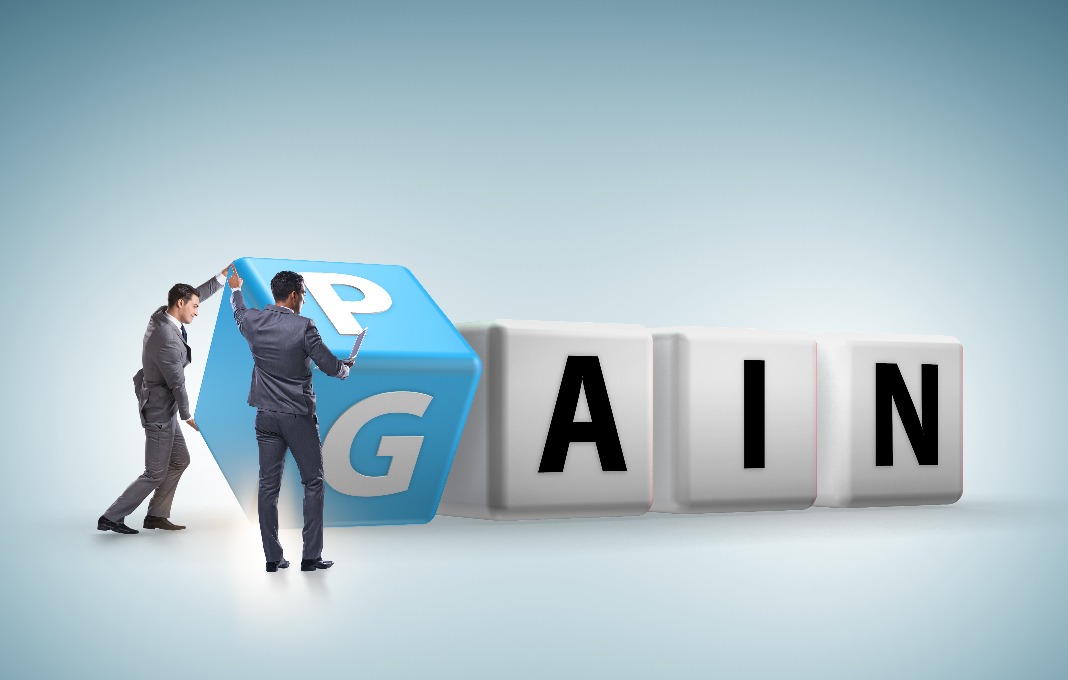What drives an organization to change? We have intentions and visions and big, audacious goals, yet for most organizations these aren’t what reliably predict change. Having a psychologically compelling reason to change is.
TWO FUNDAMENTAL DRIVERS OF CHANGE
In simple terms, there are two fundamental drivers of change: the drive to achieve and the drive to avoid. While the outcome of these drivers may be tangible or intangible, rational or emotional, the motivation basically boils down to gain and pain.
Much has been written about the first motive, the drive to achieve. The importance of having a vision, a big, audacious goal, is something we’re reminded of constantly. And some highly motivated and visionary leaders have led their organizations to great heights based purely on the drive to achieve. But they’re the exception.
Organizations are far more likely to change when they have a strong drive to achieve a desirable outcome, coupled with a strong drive to avoid an undesirable outcome. Much less has been written about the drive to avoid, yet it’s generally the more powerful drive. Evidence of this is found in the work of Nobel Prize–winner Daniel Kahneman, a pioneer in the field of behavioral economics whom I studied with while completing my PhD. It turns out that the pain associated with a prospective negative event is more intense than the gain associated with a prospective positive event of the same magnitude. For example, the prospect of reducing your salary by 20 percent feels worse than the prospect of raising your salary by 20 percent feels good. Cognitive biases like this influence our decision making, including decisions about whether or not to change.
Pain and gain—each can be motivating yet, combined, they create a psychologically compelling Case for Change.
Four Poisons That Keep Your Organization From Changing
Organizations don’t change because they don’t feel compelled to change even if they know they should change. Why?
1. Complacency. Complacency is the narcotic that dulls the drive for change. It enters your organization’s veins through the needle of success. The symptoms? Blindness to emerging threats, hardening of attitudes, softening of performance standards, and dulled reactions. When complacency takes hold, your organization drifts into that comfortable state of “good enough.”
2. Arrogance. Similar to complacency, but with an extra shot of ego. The smug feeling that you’re better and smarter than your competitors, that you’ve figured it out, and that you’ve got the results to prove it. If you’re at the top of your game, then why change?
3. The fallacy of extrapolation. This is the stubbornly persistent yet mistaken belief that present trends will continue into the future. Your organization is performing well, so of course it will continue to perform well. Why wouldn’t it? Any evidence to the contrary is written off as a blip.
4. Psychological inertia. This is the natural tendency to keep doing what you’ve been doing the way you’ve been doing it. It’s efficient. Over time, you develop patterns and you don’t question them or even think about them. They become habits.
How many of these poisons have seeped into your organization? Before charting your strategic course, you need to make sure your Case for Change—gain and pain—is powerful enough to overcome complacency, arrogance, the fallacy of extrapolation, and psychological inertia.
Where to start? Find the pain.
Three Ways To Find The Pain
The joy of pain is that it helps drive your organization to change by providing an antidote to the four poisons. Here’s how to find it:
1. It Finds You.
Cognac became a revelation in the late sixteenth century. An enterprising Dutch captain determined that by distilling the town of Cognac’s much-prized white wine, he could transport twice the quantity to Amsterdam. There, it could be reconstituted with water. Yet when the people of Amsterdam tasted the fine, distilled beverage, they recoiled at the thought of adding water. Cognac, the drink we know today, was born.
By the mid-1800s, the town of Cognac was thriving. Its eponymous spirit was in high demand throughout Europe, trade was strong, money was flowing, and stock levels were high. What could possibly go wrong?
What could go wrong was the accidental import of a tiny, aphid- like vine louse from the New World—phylloxera vastatrix. It spread unchecked through the vineyards of Europe, feeding on the roots of vines and reproducing rapidly in great numbers. The effect was devastating. Some estimates suggest that 90 percent of all European vineyards were destroyed. The Cognac trade was decimated.
Sometimes, the pain finds you. And when it does, it creates an immediate and compelling Case for Change. Something has to be done.
In the case of Cognac, many solutions were attempted, but to no avail. French grape growers even took to burying a live toad under each vine to draw out the “poison.” Nothing could slow the scourge. Finally, it was discovered that grafting indigenous grape vines onto phylloxera-resistant rootstock from the New World yielded a robust vine that didn’t compromise the flavor of the grapes. It took five years of lab research to find a rootstock vari- ety that was best suited to the terroir of Cognac. Eventually, it was found . . . in Denison, Texas. The Cognac industry was saved.
The benefit of pain finding you is that it forces you to change. You can’t ignore it; you can’t rationalize it away. You have to take action. Or else
2. Anticipate It.
Your organization isn’t experiencing any pain? Then you’d better anticipate it.
The second most popular team sport in the world is not baseball, not rugby, not basketball, and not hockey. It’s a 400-year- old sport: cricket. In the early 2000s, cricket wasn’t in pain, but there were warning signs. Attendance was down, sponsorship had slipped, and there didn’t seem to be the same number of young people taking to the sport. Was this a blip or something more significant?
The England and Wales Cricket Board (ECB) decided to take account. While the premise of the game was still compelling, the format increasingly wasn’t. One-day cricket matches last eight hours. “Test cricket”—considered the game’s highest standard—has matches that can last up to five days. In an accelerating world, that format is hardly conducive to TV viewership, fan commitment, or even a casual outing. The warning signs didn’t seem like a blip; they seemed like a trend.
Confirming their insights with market research, the ECB did something courageous and dramatic. It designed a new variation of the sport: Twenty20. Lasting roughly three hours, Twenty20— or T20 as it’s popularly known—was intended to supplement, not replace, test cricket. What happened? First officially played in 2003, T20 skyrocketed in popularity. Today, there are national leagues, international competitions, world championships, and TV rights worth billions of dollars. T20 is now the most watched form of cricket worldwide. And test cricket? Numerous articles have been written about its slow demise and pending death.
The ECB anticipated the pain and took bold and decisive action. Take a walk through the graveyard of organizations that didn’t. Thomas Cook Travel Group knew what its customers wanted for 178 years—until it didn’t. The same was true for “The Greatest Show on Earth”—Ringling Bros. and Barnum & Bailey Circus (over 140 years). Blockbuster, Motorola, Toys “R” Us, Borders Books . . . the headstones extend as far as the eye can see.
Anticipate the pain you will experience if you don’t change.
How do you do that? By attacking your assumptions.
Assumptions can be grouped into three categories: market assumptions, internal assumptions and macro assumptions.
1. Market Assumptions
Market assumptions refer to your (current and potential) tar- get market segments, customers, competitors, and suppliers. Here are two of the most common market assumptions you’re likely to make:
• Assumption: Our Customers Love Us!
Yes, and every once-successful, now-deceased company was able to say the same thing. It doesn’t matter that your customers loved you yesterday or love you today. The world evolves; things change. Customer satisfaction does not equal customer loyalty! What cus- tomers are loyal to is value. The moment they think someone else just might be able to provide better value than you is the moment they’re ripe to leave.
• Assumption: We’re Better Than Our Competitors
Which competitors? Your current ones or the ones who haven’t yet emerged, who are looking to disrupt your industry, and who can bring superior resources and change the game? And what makes you so sure you’re better than your current competitors? Or that they’re standing still? When you underestimate your competitors, you become vulnerable.
2. Internal Assumptions
Internal assumptions relate to your products, services, processes, structure, people, and systems. Here’s an assumption almost every company makes:
• Assumption: We Have Great People
Maybe. Yet how do you validate that? Even if your people are bet- ter, how do you know they’re consistently performing better than your competitors or that you’ll be able to retain them? And once you assume your people are superior, you’re likely to become lax about performance standards.
3. Macro Assumptions
Macro assumptions refer to the STEEP factors—the sociocultural, technological, economic, environmental, and political factors that could put your business out of business. Recall how the accelerating pace of society (a sociocultural factor) severely threatened the future of cricket, and how a tiny vine louse (an environmental factor) all but decimated the cognac industry. Here’s a macro assumption we’ve seen play out more than once:
• Assumption: The Economy Is Growing So It Will Keep Growing
The problem is that the economy often doesn’t provide a lot of advance warning before it starts slowing down. Even when the warn- ing signs appear, are you usually too quick or too slow to react? Think subprime lending crisis or global pandemic. If you’re too exposed, and don’t protect your company against the next, inevitable downturn, then you could become a casualty of economic Darwinism.
Attack your assumptions. Market assumptions, internal assumptions and macro assumptions. It’s an effective way of anticipating the pain that could threaten your business.
3. Create It.
If the pain hasn’t found you and if there’s no plausible pain to anticipate, then as a last resort you have to create it.
That’s what Yvon Chouinard did. Chouinard is the founder of Patagonia, the outdoor, high-performance clothing retailer with a strong environmental focus. Patagonia was a successful company with a well-established brand, innovative and fashionable product lines, deep-rooted relationships, and solid financials. In short, no pain.
When an internal analysis revealed that the most environmentally damaging fiber Patagonia used was industrial-grown cotton, Chouinard decided to create the pain. He gave the company 18 months to stop using it. Period. How significant was that? At the time, 25 percent of Patagonia’s $250 million business was based on products made with industrial cotton!
What happened? The prospective pain of losing more than $60 million in revenues was simply unacceptable. The company made the switch within 18 months. Its stand on using only environmentally friendly cotton resonated with the market, helped to further differentiate and elevate its brand, and made it an even more profitable business.
Pain—recognize it, anticipate it, create it. It’s the most effective antidote to the four poisons that keep your organization from changing.
THE SOLUTION: DEVELOP A COMPELLING CASE FOR CHANGE
Your objective in the Assess phase is to attack your assumptions, understand the strategic context in which your business operates, and develop a Case for Change—the strategic “why.” It must be compelling enough to overcome the four poisons that inhibit organizational change, and it should take into account the two fundamental drivers of change—pain and gain.
Here are examples of paired Case for Change statements developed with our clients:
• If we don’t optimize our product portfolio, then revenues and margins will continue to shrink, and our future will be at risk. (pain)
• If we optimize our product portfolio, then revenues and mar- gins will grow, which will help secure our future. (gain)
• If we don’t adopt and utilize targeted technologies, then we will continue to lose customers and new customer opportuni- ties. (pain)
• If we adopt and utilize targeted technologies, then we will gain relevance and recapture customers and market share. (gain)
• If we don’t attract and hire the right people, then growth will cause us to implode. (pain)
• If we attract and hire the right people, then we will have the capabilities to support growth. (gain)
How many paired Case for Change statements should you have? As few as one, but no more than five. Too many will dilute your focus.
With a well-thought-out Case for Change, it becomes almost unthinkable that you wouldn’t take action. Each pair of statements offers you and your Strategic Leadership Team a stark choice. Pain or gain. Your choices will determine your legacy. Choose well.
Excerpted from Ruthless Consistency: How Committed Leaders Execute Strategy, Implement Change, and Build Organizations That Win by Michael Canic, p. 47-58 (McGraw Hill, September 2020).









